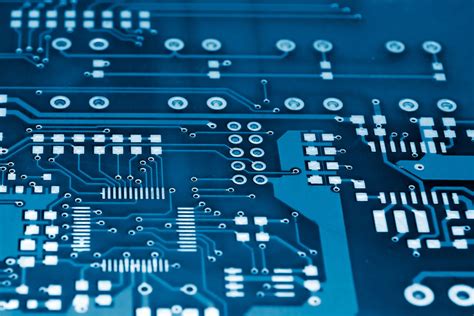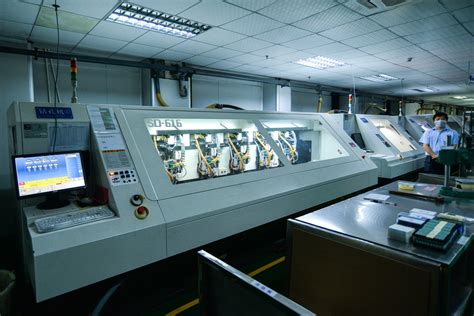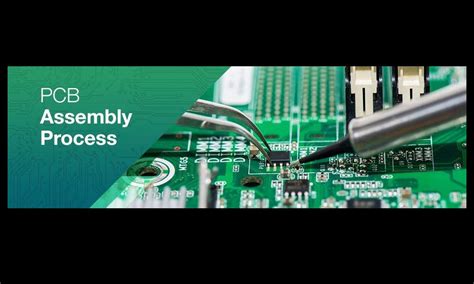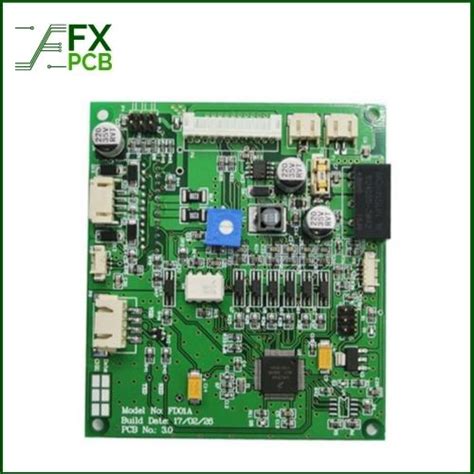Unlocking Affordability: Discovering Blank PCB Board Prices
Key Takeaways
When exploring blank PCB board prices, it’s essential to consider several factors that contribute to the overall pcb manufacturing cost. Understanding how different pcb manufacturing companies operate can provide you with insights into what influences pricing. One key aspect is the choice of materials; higher-grade materials often lead to better performance but can significantly increase costs. Additionally, the complexity of your PCB design plays a crucial role—more intricate designs typically require more advanced techniques and, consequently, elevate the pcb manufacturing cost.
It’s also important to recognize how various manufacturing processes can affect pricing. For instance, opting for state-of-the-art processes may enhance quality but could also lead you to face higher costs compared to traditional methods. As you delve into the realm of PCB production, consider comparing prices between high-quality PCBs and lower-cost alternatives; while the former may offer unrivaled reliability and longevity, cheaper options might suffice for less demanding applications.
Ultimately, understanding these key factors will help you budget effectively for your pcb manufacturing business and allow you to make informed decisions that align with both your performance needs and financial constraints. Balancing quality with affordability is crucial, ensuring that your investment in blank PCBs supports the goals of your project without compromising on essential features.
Unlocking Affordability: Understanding Blank PCB Board Prices
When engaging in pcb manufacturing, understanding the pricing of blank PCB boards is essential for your project’s budget. Various factors affect the pcb manufacturing cost, including the quality of materials, the complexity of the designs, and the chosen manufacturing processes. You should consider that pcb manufacturing companies often offer different pricing structures based on these elements. High-quality materials may elevate your costs, whereas simpler designs can help keep expenses in check. For instance, rigorously engineered boards are likely to incur higher costs due to increased precision in production. Additionally, manufacturing techniques—like automated production versus manual assembly—can have significant cost implications as well.
“Careful planning and understanding of your project needs can lead to substantial savings without compromising quality.” Thus, when determining your budget for a PCB project, it’s beneficial to assess both high-quality PCBs and consider low-cost alternatives that may meet your requirements without overstretching finances. Ultimately, by making informed decisions regarding the pcb manufacturing business landscape and recognizing these cost factors, you can unlock affordability in blank PCB board prices while achieving excellent results for your electronic endeavors.

Key Factors Affecting Blank PCB Board Pricing
When it comes to the blank PCB board price, several pivotal factors influence the overall pcb manufacturing cost that you should consider. Firstly, the choice of materials is crucial; materials that offer better conductivity or enhanced durability may come with a higher price tag. This choice affects not only the cost but also the performance and lifespan of your printed circuit boards. The complexity and design of your PCB will also play a significant role in determining the pricing. Intricate designs with multiple layers or specialized requirements can increase costs as they require advanced techniques from top pcb manufacturing companies to ensure precision and reliability.
Moreover, the manufacturing processes you select can greatly impact your budget. If you opt for standard production methods, you might save money compared to using advanced techniques like laser-cutting or non-standard specifications which may drive up costs due to longer lead times and extra labor involved in the pcb manufacturing business. Additionally, comparing prices for high-quality PCBs versus low-cost alternatives can highlight significant differences in performance and durability, which might justify a higher initial investment for better long-term value. Understanding these elements will empower you to make informed decisions that align with your project’s needs and budget constraints.
Material Choices and Their Impact on PCB Costs
When embarking on your journey in PCB manufacturing, it’s crucial to understand that your material choices play a significant role in determining your overall PCB manufacturing cost. The quality and type of materials you select can vastly influence the final price of your blank PCB board. For instance, if you choose premium substrates such as FR-4 or Rogers, you can expect to incur higher costs compared to using more basic materials.
The following table illustrates how different material choices can impact costs:
| Material Type | Estimated Cost Range per Square Foot | Common Applications |
|---|---|---|
| FR-4 | $2 – $5 | General use, consumer electronics |
| Rogers | $5 – $15 | High-frequency applications |
| Polyimide | $3 – $8 | Flexible PCBs, high-temperature settings |
| Aluminum | $6 – $12 | LED applications |
In addition to material type, the thickness and size of the PCB also contribute to the PCB manufacturing cost. Thicker boards often require more expensive materials and complex processing techniques. When partnering with various PCB manufacturing companies, make sure to discuss material options thoroughly because these decisions may significantly impact your project budget.
Being knowledgeable about these aspects allows you to make informed decisions that align with your budget while ensuring that the quality meets your standards. For instance, while seeking affordability, balancing cost against quality is vital; opting for lower-cost materials may lead to compromised performance in critical areas of your designs.
Ultimately, whether you’re a novice or a seasoned professional in the PCB manufacturing business, understanding how material choices influence pricing will better prepare you for budgeting effectively in this competitive industry.

Complexity and Design: How They Influence Pricing
The complexity of your design significantly affects the pcb manufacturing cost. When you consider the intricacies involved in creating an electronic circuit board, it becomes evident that more complex layouts demand greater precision and specialized techniques. This means that pcb manufacturing companies will likely charge more for boards that have numerous layers, intricate routing, or high-density interconnections. Additionally, if your design requires unique specifications—such as specific materials or finishes—this can further influence the overall cost. Understanding these dynamics is crucial for managing your budget effectively. The pcb manufacturing business thrives on efficiently delivering high-quality products that meet various customer needs; however, intricate designs inevitably lead to increased production times and costs. As you plan your next project, it’s vital to weigh the benefits of complex designs against their potential impact on pricing, ensuring you strike a balance that aligns with your financial goals while not compromising on quality or performance.
Manufacturing Processes: Cost Implications for Blank PCBs
When considering blank PCB board prices, understanding the various manufacturing processes is crucial. Different pcb manufacturing companies employ a range of techniques, each impacting the overall pcb manufacturing cost significantly. For instance, processes such as etching, drilling, and layering add to the complexity and time required for production. As you delve into the realm of pcb manufacturing, you’ll find that the choice of technology—be it manual or automated—also plays a vital role in determining expenses. More advanced machinery can lead to higher initial costs but might reduce long-term expenses due to increased efficiency and higher output quality. Additionally, deciding between local and overseas pcb manufacturing businesses can influence pricing based on labor costs and materials availability. By recognizing these factors, you can make more informed decisions that align your budget with your quality expectations when sourcing blank PCBs.
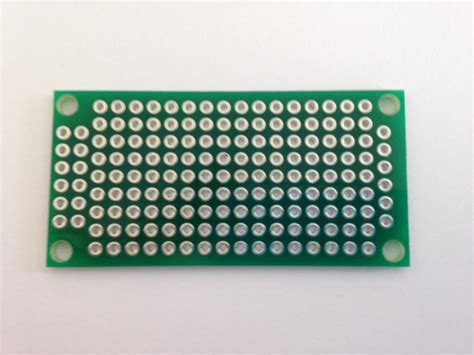
Comparing Prices: High-Quality PCBs vs. Low-Cost Alternatives
When weighing your options for blank PCB board prices, it’s essential to understand the disparity between high-quality PCBs and their low-cost alternatives. While it may be tempting to choose the more affordable option, you should consider what you’re gaining or potentially sacrificing in quality and performance. High-quality PCBs, crafted by reputable pcb manufacturing companies, often utilize superior materials and precise manufacturing techniques, resulting in longer-lasting products suitable for more complex applications. In contrast, low-cost alternatives might save you money upfront, but the pcb manufacturing cost may not justify the compromise on durability and performance. Faulty boards can lead to failures that incur higher costs in repairs and replacements over time, so it’s vital to evaluate the overall value of your investment carefully. As you navigate this decision, consider how your choice impacts the viability of your pcb manufacturing business in the long run. Opt for suppliers who demonstrate a robust quality assurance process; this might elevate your initial expenditures but ultimately contributes to reliability and success in your projects.

Budgeting for Your PCB Project: Tips and Considerations
When embarking on a PCB project, understanding the pcb manufacturing process is crucial for effective budgeting. To start, you should assess the pcb manufacturing cost, which can vary widely based on several factors. For instance, consider the scale of your production—larger quantities often benefit from economies of scale, reducing the overall cost per unit. Additionally, the choice of pcb manufacturing companies can significantly influence pricing; some may offer premium materials that increase durability and performance at a higher price point. Evaluate whether your project demands these features or if more economical options are viable.
Furthermore, it’s important to factor in complexities associated with your design. More intricate designs typically incur higher costs due to the sophisticated manufacturing processes required. Each layer and component adds labor and material expenses, impacting your budget. Conversely, keeping designs simple can help you save money while still achieving your project goals.
Lastly, always compare quotes from various pcb manufacturing business providers. This way, you can gain insight into competitive pricing and ensure optimal value for your investment. Understanding these considerations will empower you to make informed decisions while maximizing affordability in your PCB projects.
Future Trends in Blank PCB Pricing and Affordability
As you navigate the landscape of blank PCB board pricing, it’s essential to consider the evolving trends that could impact your costs in the near future. The pcb manufacturing industry is witnessing significant transformation, influenced by advancements in technology and shifting market dynamics. One prominent trend is the increasing adoption of automation in pcb manufacturing processes, which not only enhances efficiency but also helps to reduce pcb manufacturing costs. As technology continues to improve, pcb manufacturing companies are likely to invest more in state-of-the-art equipment, potentially resulting in lower prices for consumers. Additionally, there’s a growing focus on sustainable materials, which can alter material choices and indirectly affect your overall budget for high-quality PCBs. It’s vital to keep an eye on these shifts as they could greatly influence your financial planning for any PCB-related projects you may undertake. By understanding these future trends, you can better align your budget expectations with the anticipated changes in the pcb manufacturing business, ensuring that you make more informed decisions regarding your PCB investments.
Conclusion
Understanding the dynamics of blank PCB board prices is essential for anyone involved in the pcb manufacturing process. As you navigate your options, it’s crucial to keep in mind the factors that contribute to pcb manufacturing costs. The choices you make regarding materials can significantly influence overall expenses; higher-grade materials often yield better performance but come at a premium. Moreover, the complexity of your design can further affect pricing. Intricate layouts or specialized features typically require more sophisticated techniques and additional resources, resulting in higher costs.
When assessing the landscape of pcb manufacturing companies, you’ll find a broad spectrum of pricing that reflects varying levels of quality and service. Opting for low-cost alternatives might seem appealing at first, but this could inevitably lead to compromises in durability and functionality, which may not justify the initial savings. Do not overlook the importance of a comprehensive budgeting strategy tailored to your pcb manufacturing business. This approach ensures you account for all essential aspects of production without overspending or encountering unexpected costs.
In this ever-evolving industry, keeping an eye on future trends in blank PCB pricing will help you stay competitive while managing expenditures prudently. By doing so, you’ll be better positioned to make informed decisions that align with your project’s goals and budgetary constraints. Always evaluate your options carefully to achieve a balance between cost and quality, fostering long-term success in your PCB projects.
FAQs
What affects the cost of blank PCBs?
The pcb manufacturing cost can vary significantly based on several factors, including the type of materials used, the complexity of the design, and the specific manufacturing processes employed by pcb manufacturing companies.
How do material choices influence pricing?
Selecting high-quality materials generally leads to a higher pcb manufacturing cost, but it can also improve performance and durability. Cheaper materials might reduce upfront costs but could compromise quality in the long run.
Does PCB complexity impact price?
Yes, the complexity of your design—such as the number of layers and component density—directly affects cost. More intricate designs require advanced techniques and more time in production, which can escalate your pcb manufacturing business expenses.
Are there lower-cost alternatives for blank PCBs?
While lower-cost options exist, it’s essential to weigh these against potential risks in quality and reliability. Spending less upfront may incur higher costs later if your PCB does not perform as expected.
Where can I find reliable pcb manufacturing services?
You can find quality services by researching various pcb manufacturing companies, looking at customer reviews, and comparing their offerings. Seeking out a company that fits your budget while maintaining quality is crucial.

